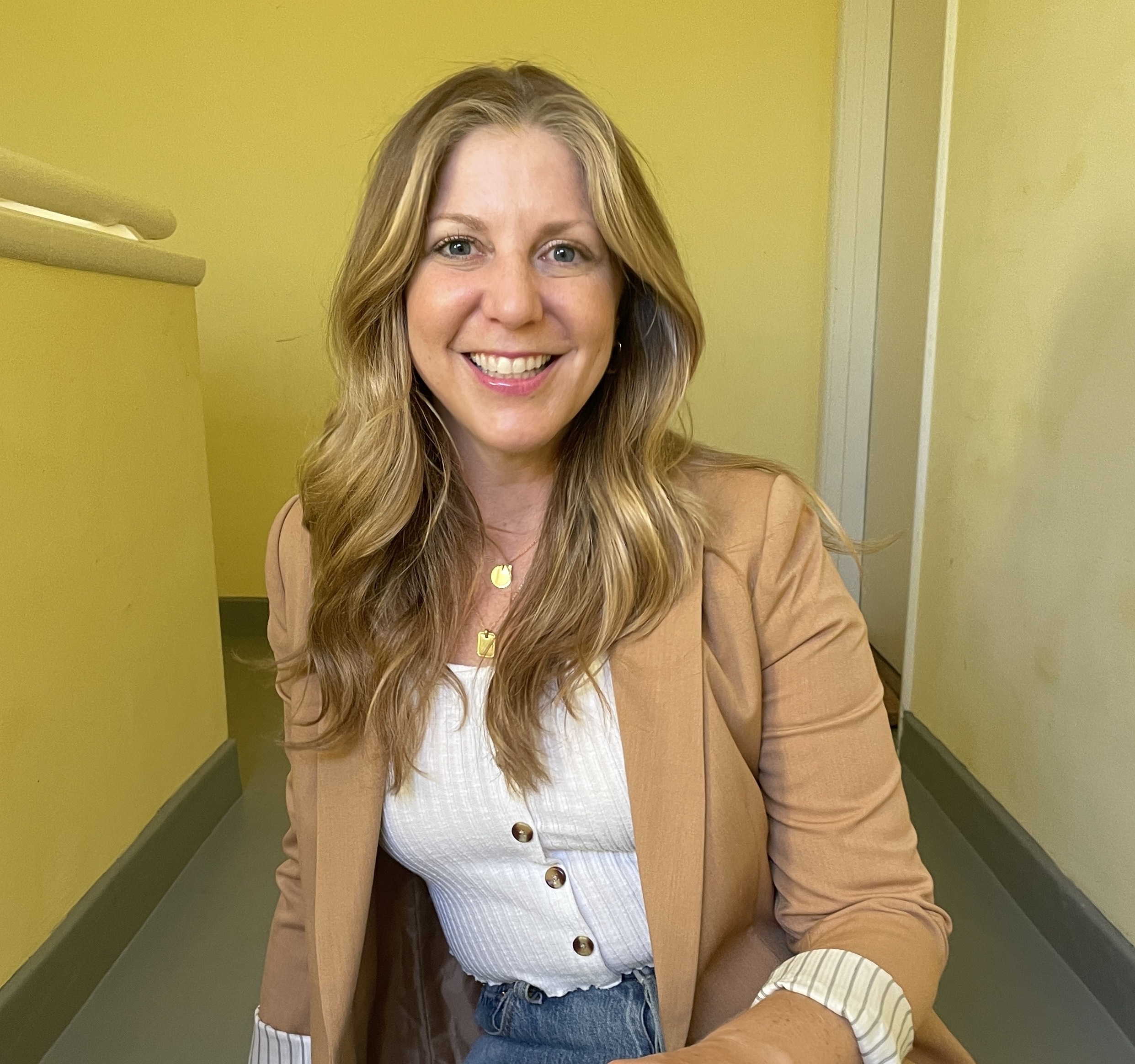Content warning: discussions of death and dying.
If there's one thing for certain in this life, it's that we are all going to die. And yet, talking about death has become one of the most taboo topics in western society — one study found that while 92% of people surveyed believed talking about end-of-life care was important, only 32% actually do so.
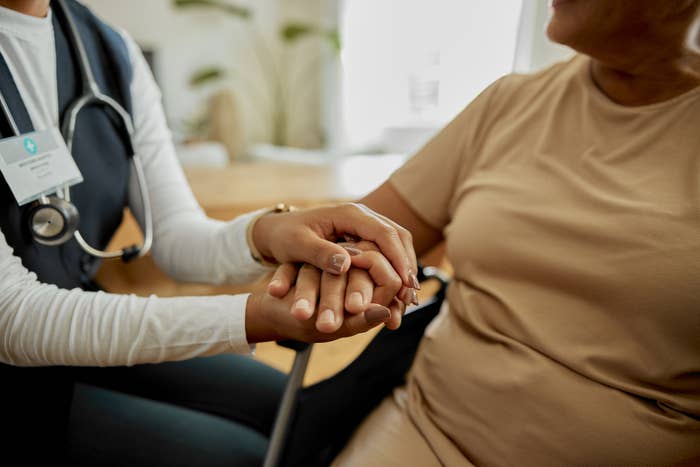
Some people are changing that by attending death cafés, a discussion group where people gather to get more comfortable speaking about their own mortality. And some of have turned to TikTok — such as Julie McFadden, RN, BSN, otherwise known as @hospicenursejulie, who educates about death and dying to her over 1 million followers.

In a recent video, which racked up over 8 million views, nurse Julie walks viewers through what it looks like when someone's in their last phases of their life, which is called the "actively dying" phase, with a real-life example.
She explained that the person is usually unconscious, not taking any food and water, and their eyes and/or mouth are usually open. “This is usually a few days before someone dies. I’ve seen it last as long as three weeks — but that’s very rare. And almost everyone looks the same during the actively dying phase,” she told BuzzFeed.

In the video, Julie explained her reasoning behind sharing what would otherwise be a pretty personal moment. She said, "I have found that most people are afraid or scared when they are around someone who is dying, or even just talking about death and dying."
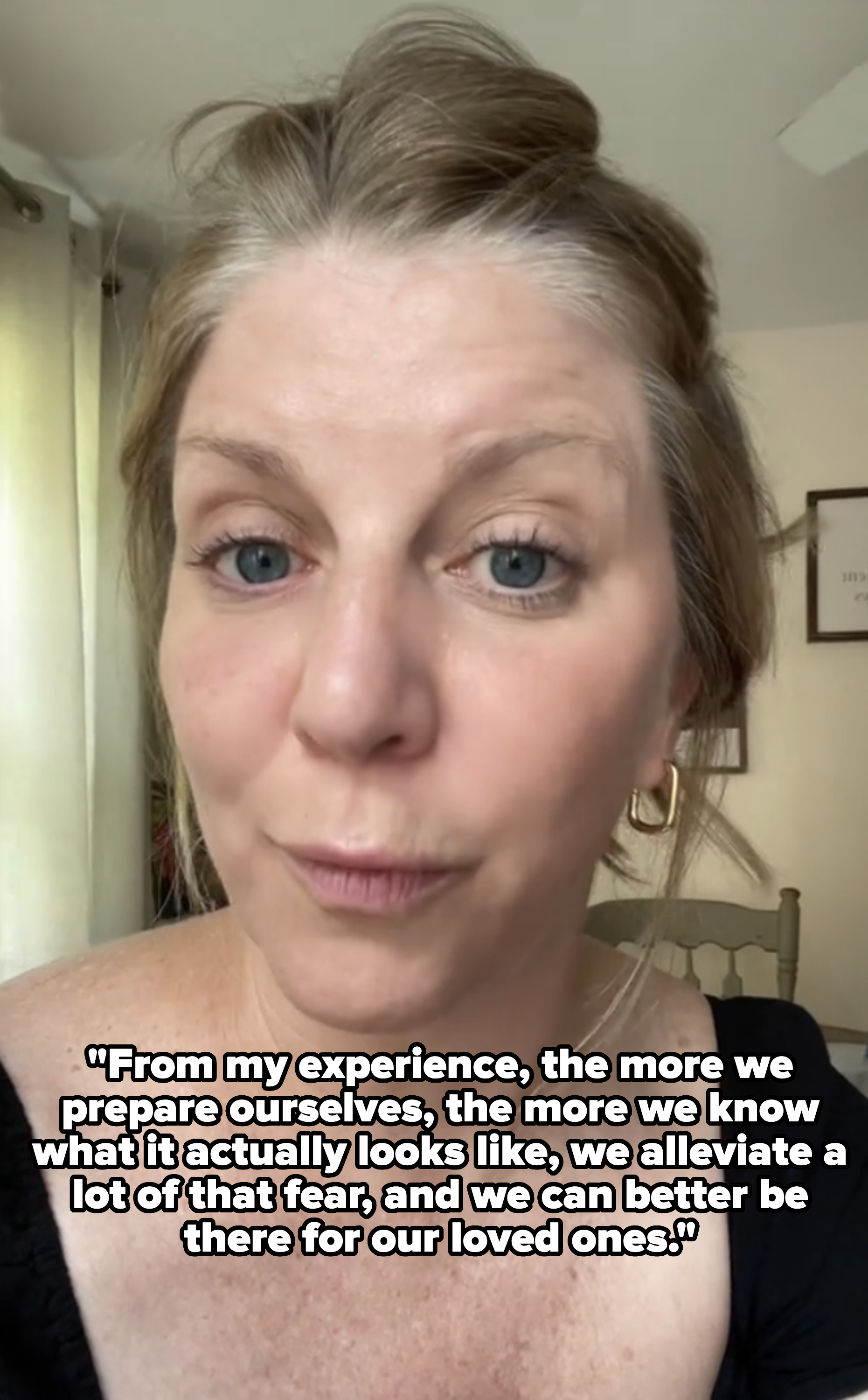
Julie proceeded to show viewers a clip of someone in the actively dying phase, provided by one of her followers. In the video, the woman's eyes are shut, but she is breathing with her mouth wide open. Her breathing almost sounds like a noisy wheeze, and she takes longer pauses between each breath. Her hands are twitching slightly. The woman passed away about 12 hours after the clip was taken.
Julie said that the twitching can be caused by electrolyte imbalance. She also explained that all of these symptoms are very normal, and not causing the patient any pain.
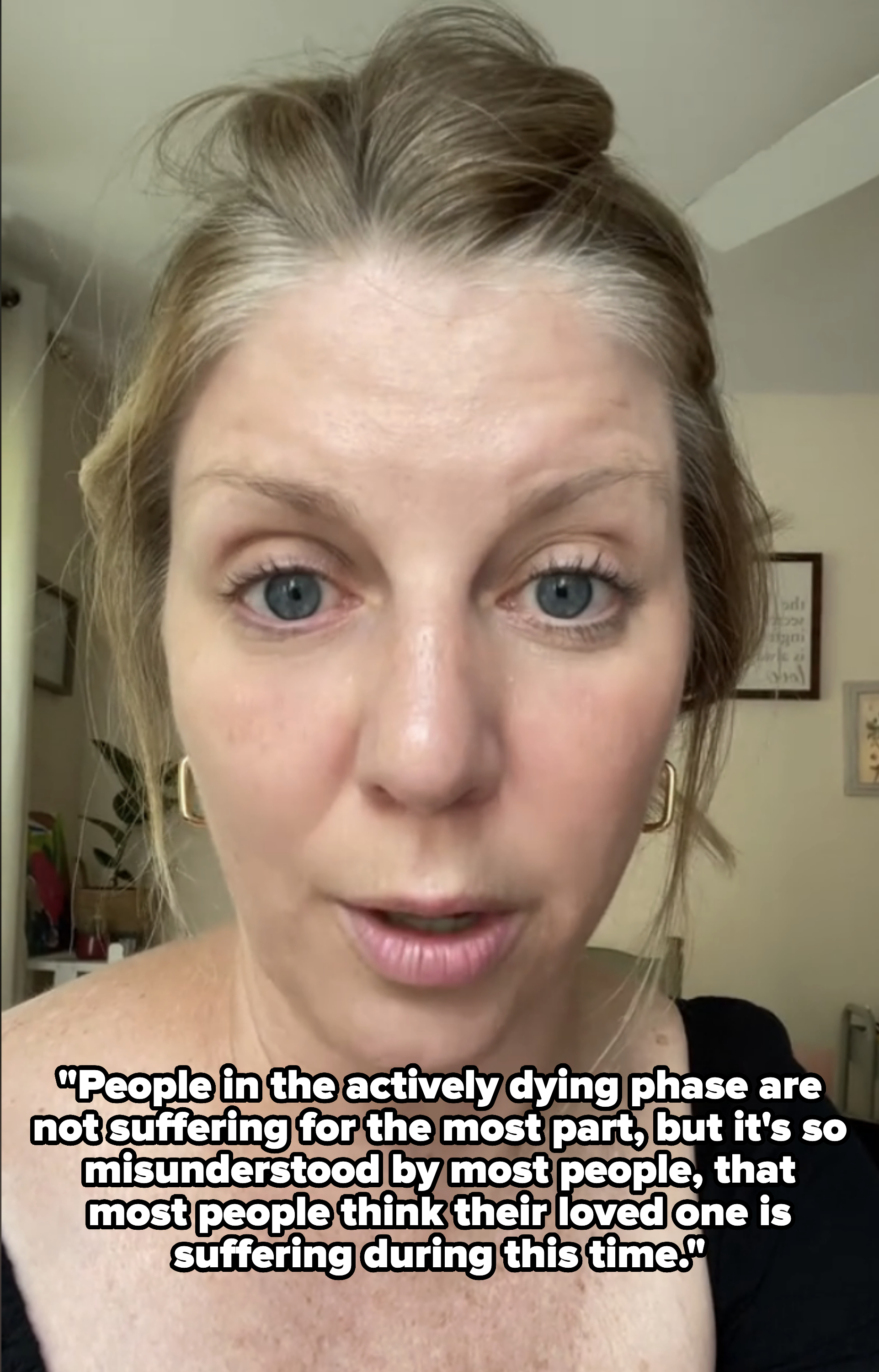
Visible in the video, one of the most obvious symptoms of someone in the actively dying phase is their breathing, which Julie said can be compared to "guppy" or a "fish out of water." "They might pause for 20 seconds between each breath and kind of gasp with each breath," Julie explained.

"And then the other thing that can happen is terminal secretions, or everyone calls it the 'death rattle,' which is like a gurgling noise," she added. In the video comments, many people commented about witnessing this with a loved one.
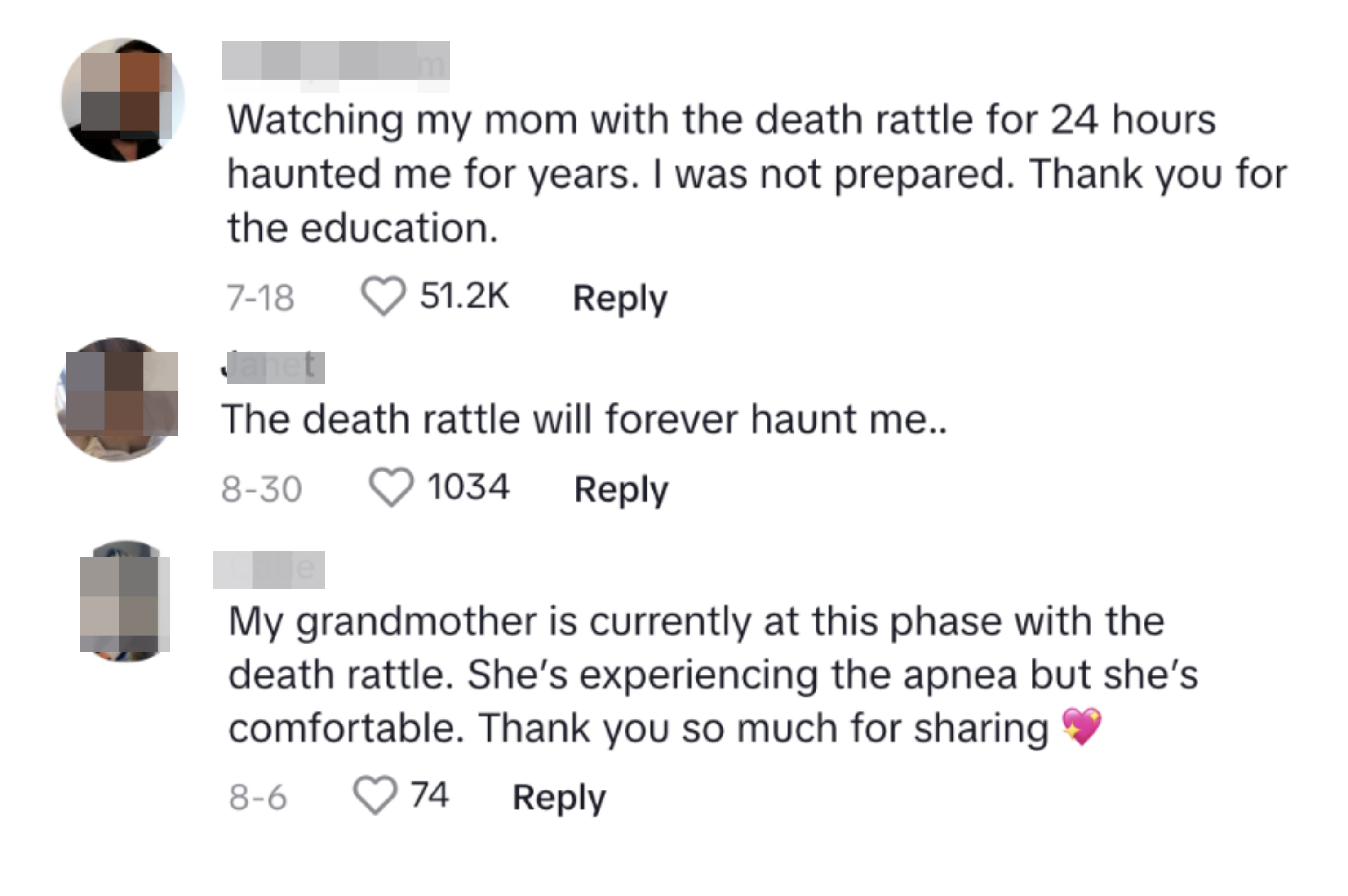
Despite the alarming name and an off-putting sound to witness, Julie explained that this sound is pretty normal, and the person is not choking or drowning in their own secretions, nor is the sound coming from the lungs.
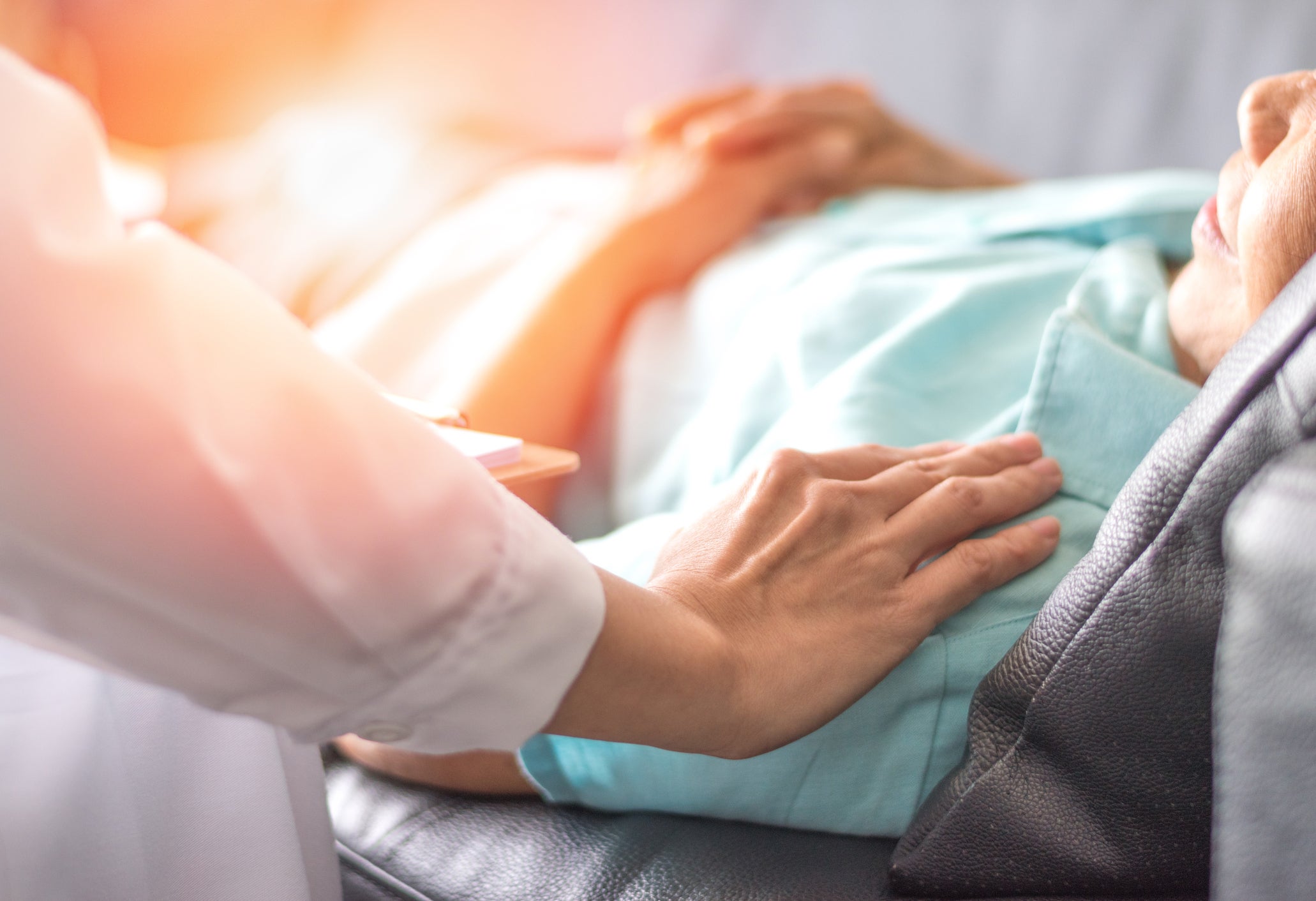
And while some loved one's first instinct might be to ask the nurse to suction up the spit, Julie said this can actually make the gurgling worse.

People in the actively dying phase may also experience mottling, which is when the skin changes color to become a little more red or purple, usually around the fingers, the toes, the knees, and sometimes the nose, Julie explained. She also said that they might have an "end-of-life fever," where the person's temperature changes hot to cold, cold to hot.

But why is this all happening? Simply put, Julie said, "Our bodies are built to die. Our bodies know what to do when they're dying."
She told BuzzFeed, "The body systematically shuts down and takes care of itself during this time. That's the main focus I always want to tell people, because people think it's happening because something's wrong. It's actually happening because our body knows how to die. And it's systematically shutting it down."
Aside from physical symptoms experienced by people in the actively dying phase, they may also experience less explainable phenomenon. For the woman in the video, the family told Julie that she had end-of-life "visioning" two weeks prior to death, where she was seeing loved ones who had passed on. She also experienced a "rally" a few days before the video, where she had a random burst of energy, walking, talking, and moving around just before passing.
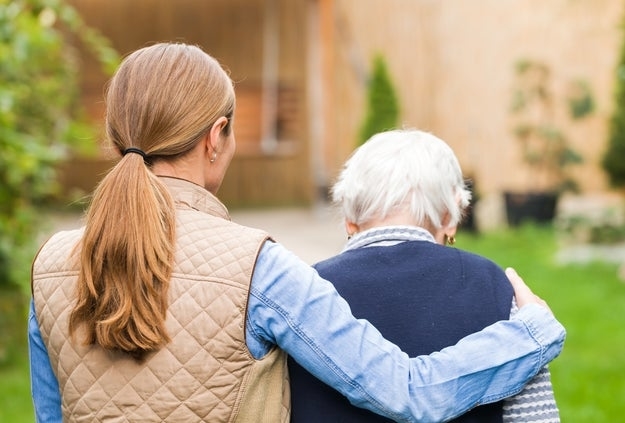
Many also commented about witnessing a form of the "rally" with their loved ones before they passed:
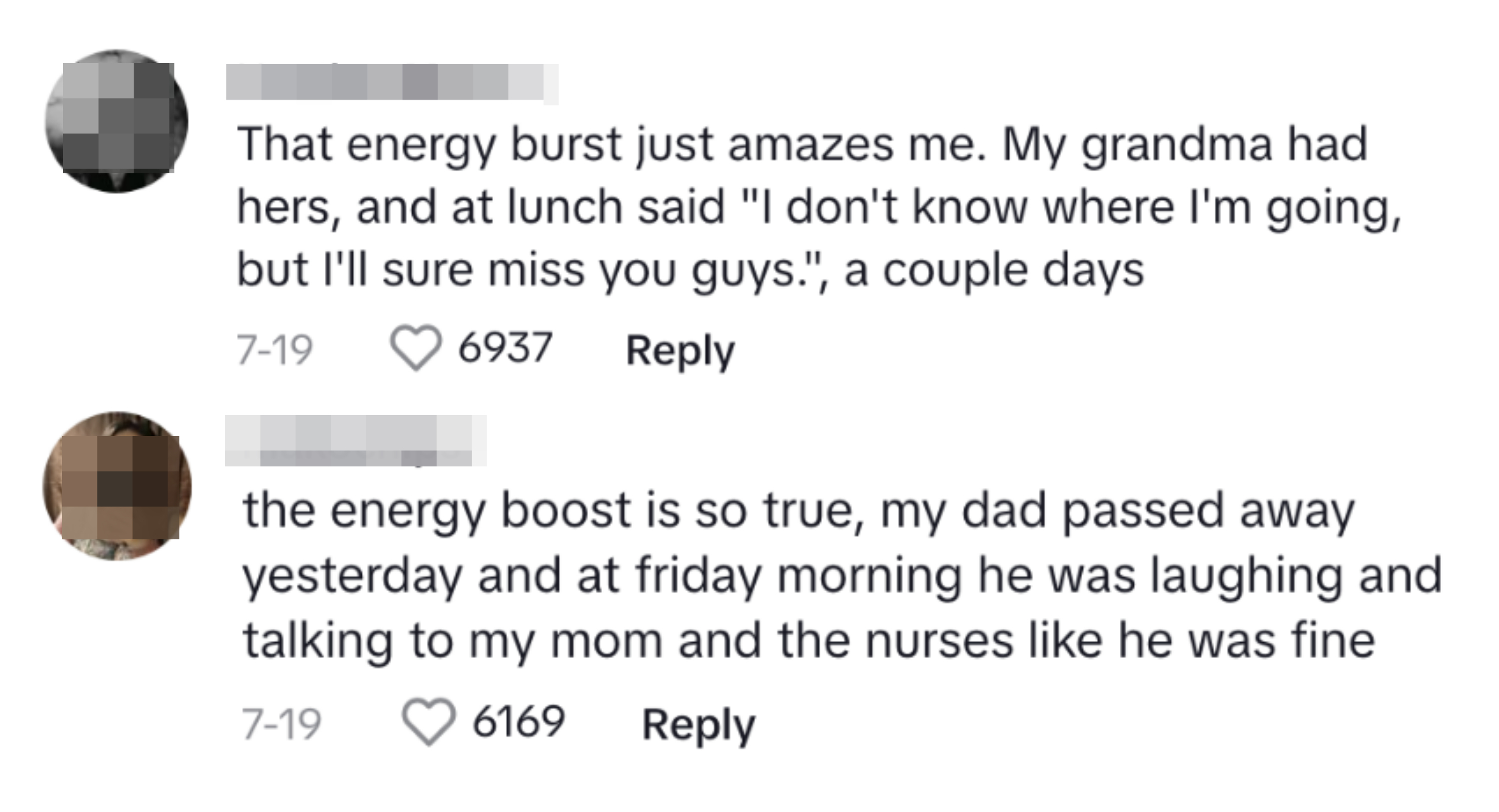
Julie explained both of these phenomena. She told BuzzFeed, "Visioning and terminal lucidity — the actual name for the 'rally' or the 'surge' — are two different phenomena that happen at the end of life for most people."
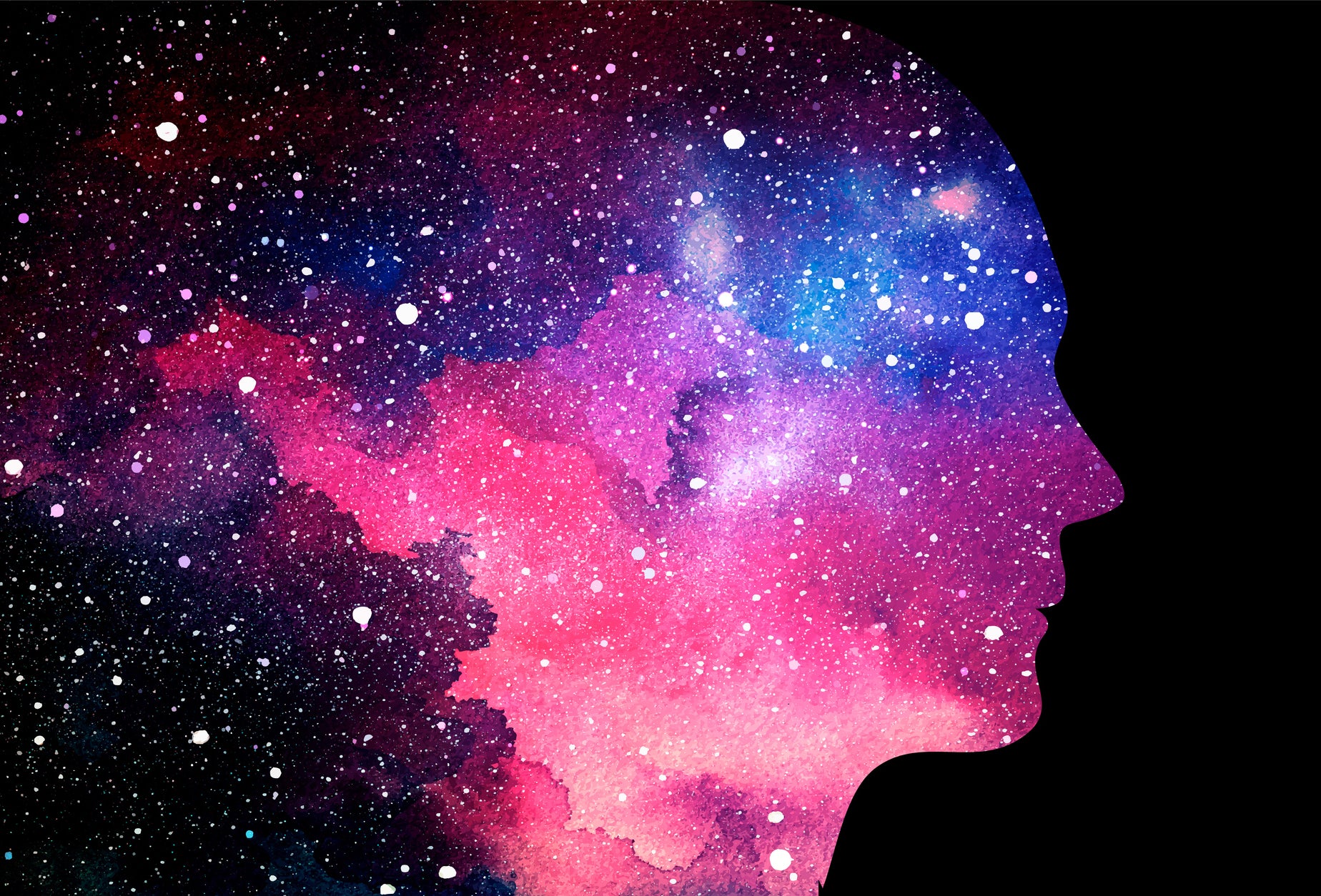
"Visioning usually starts happening three to four weeks before someone dies. They'll start seeing dead relatives, dead loved ones, dead pets, old friends, all of which who have already died," she said. Julie explained they might also see religious deities, and that visioning is distinctly comforting and very common among end-of-life patients.
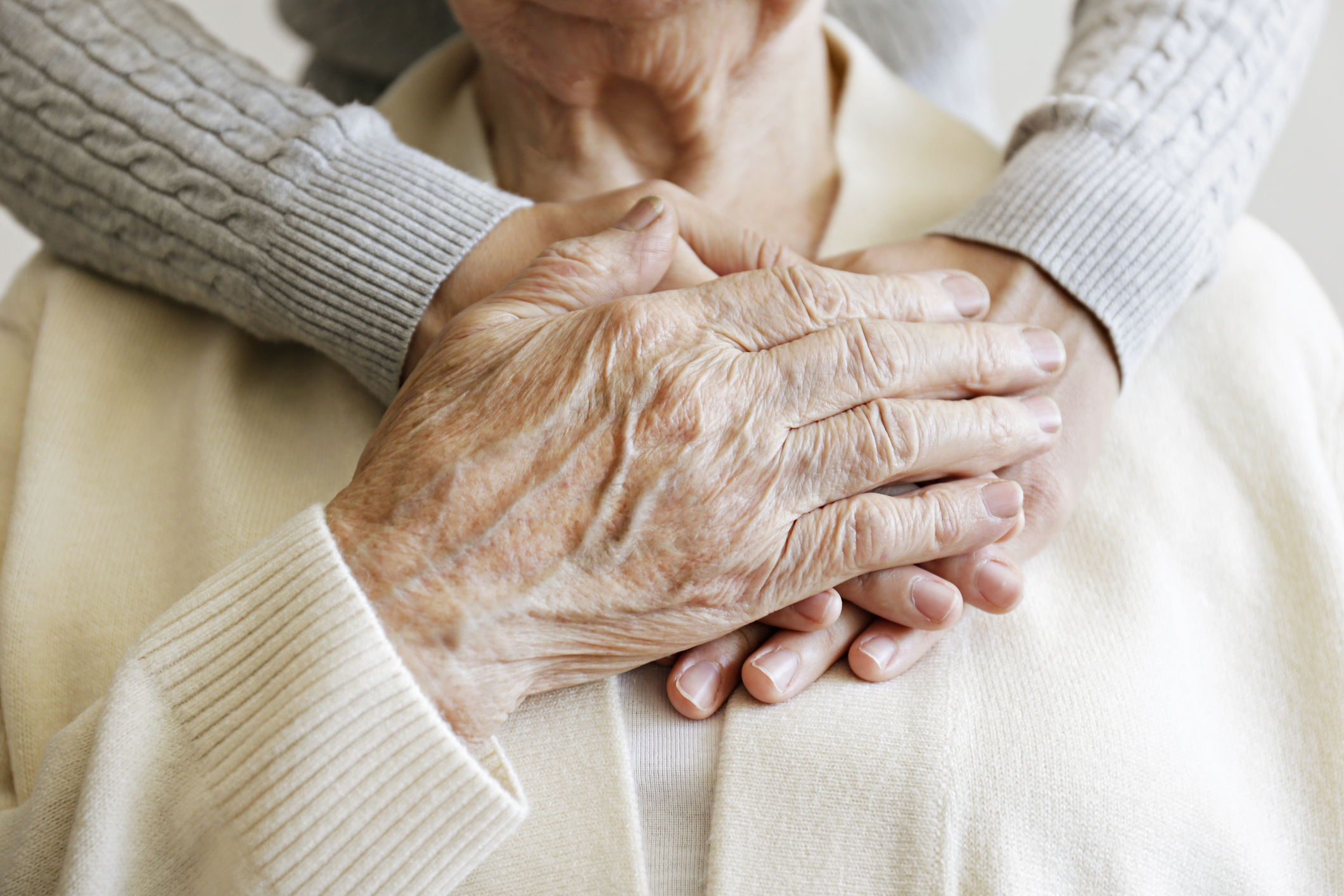
As for the "rally," Julie explained: "The rally is, or the surge, or terminal lucidity — those are all names you can use for it — is when someone looks very close to death, and then suddenly they have a burst of energy. They may be their 'old selves' again, start eating, and want to get up and walk again. They'll have a really good few days, and then suddenly die." This might mean a dementia patient suddenly regains their memories and personality just before death.

If your loved one is in hospice or palliative care, the nurses and physicians will typically let you know if they are in the actively dying phase, Julie said. "In the hospital, the actively dying phase is not really talked about because we're constantly trying to keep people from dying. So this is specifically for hospice."

In terms of how people can be more comfortable around death and dying, Julie says it's through education. "I think we all need to prepare for death before it's happening. So, even just by someone reading an article like this is helping them prepare, or by watching videos like I have on my page. This information is for everyone. They're not just for people who have someone in their life dying right now. The more you know, the less scary it can feel," Julie shared with BuzzFeed.
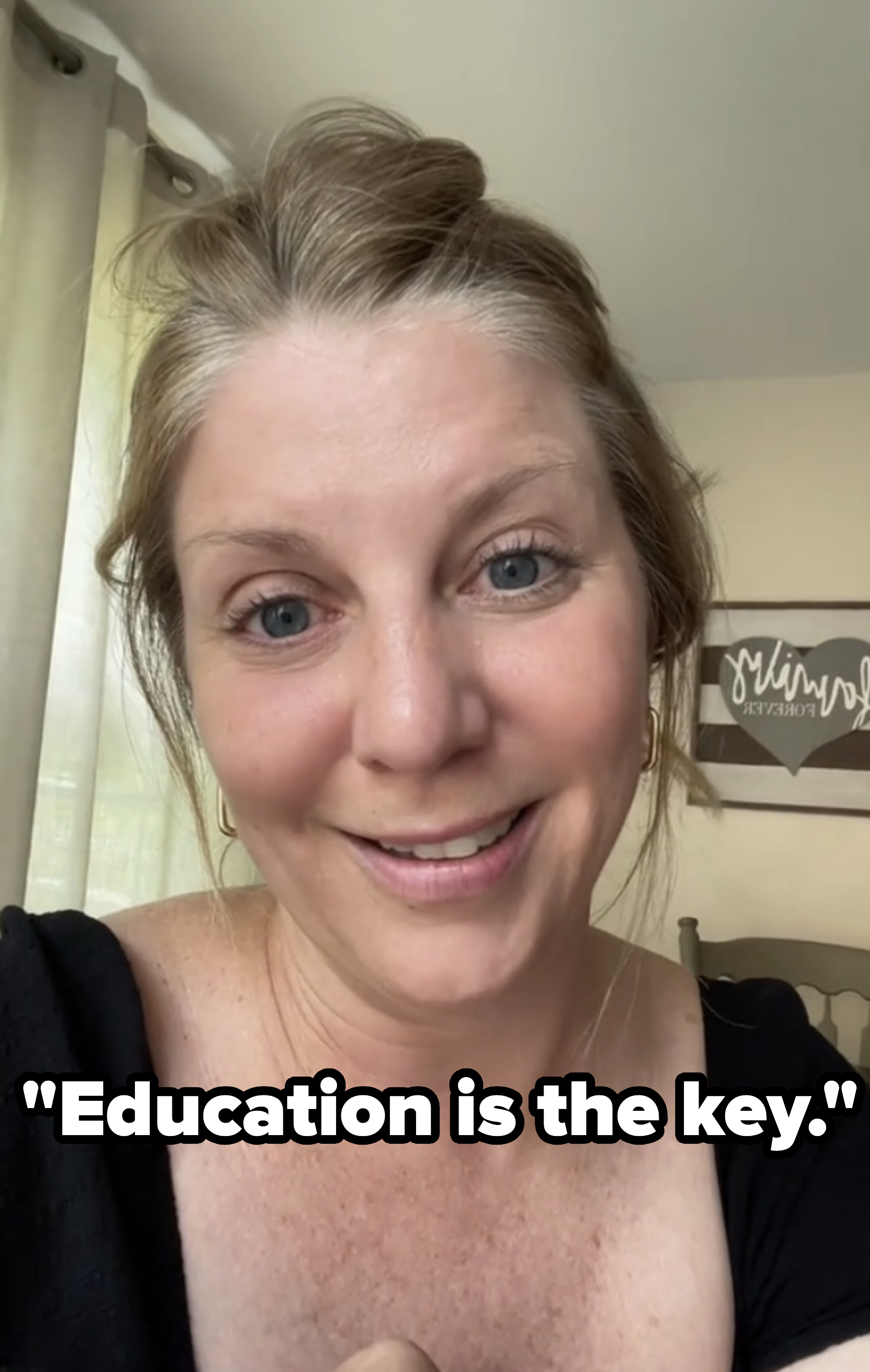
"Even if all of your loved ones in your life are healthy right now, I think education will help you in the future. But in general, I think just even acknowledging that this is a part of life. People think, 'Oh, my God, I can't do that. That's too scary. That's too awful. It'll make me too sad.' I have seen the opposite. People who are willing to go there, seem to be freer, and seem to have more peace, and less fear," she said.

As for Julie, she saw this resistance firsthand, which motivated her to become a hospice nurse in the first place. She said, "I was an ICU nurse for many, many years. [In the ICU], I was seeing that we weren't being as honest. You know, no one's trying to be dishonest, right? We just live in the system in this world that wants to deny death at all costs."
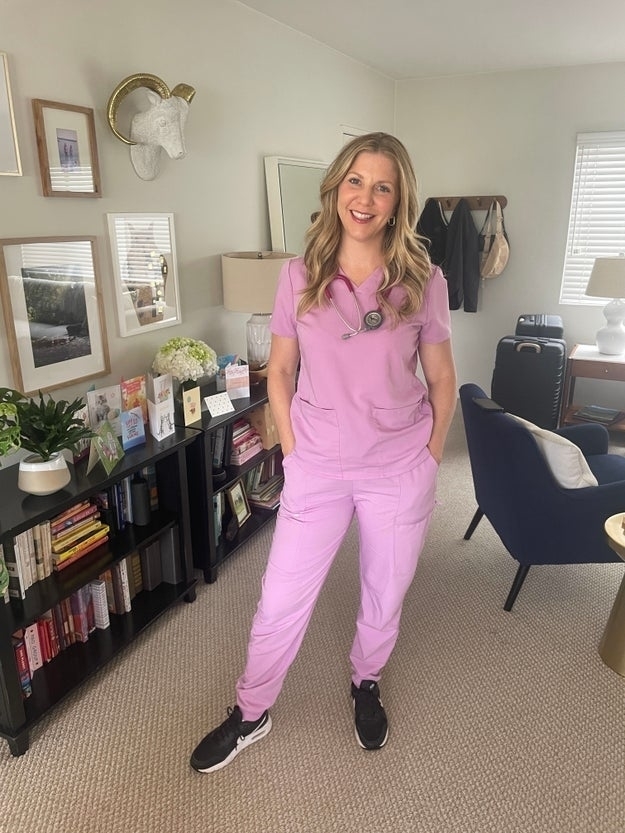
Overall, Julie just wants people to understand that when we are more understanding of death and dying, we can alleviate fear and better be there for our loved ones in their final stages, as well as ourselves.
"Like I said, it's just this whole idea that people need to understand that the body is built to die," she shared. "The less we mess with the body's ability to help us die, usually the more peaceful it is."

